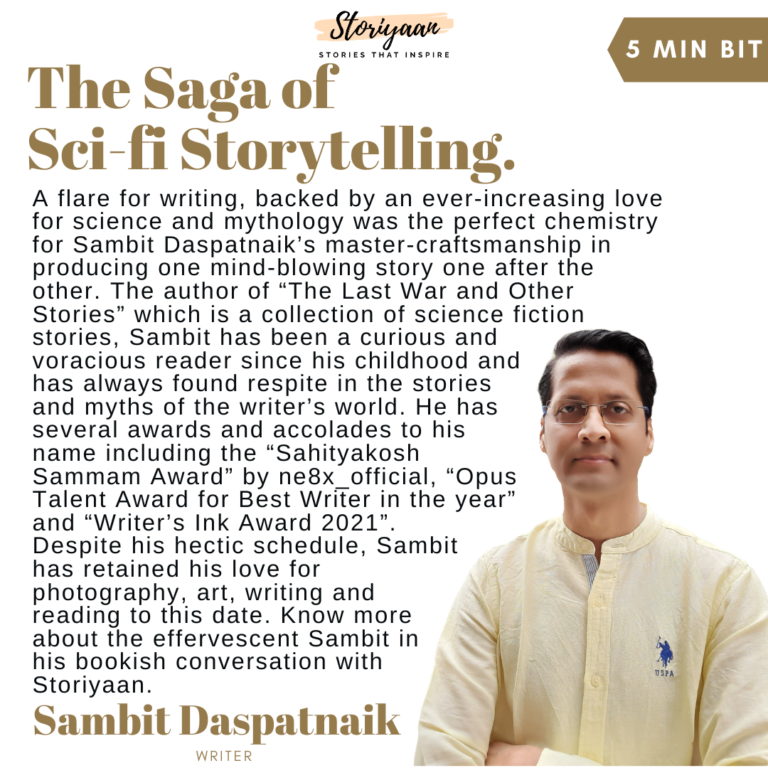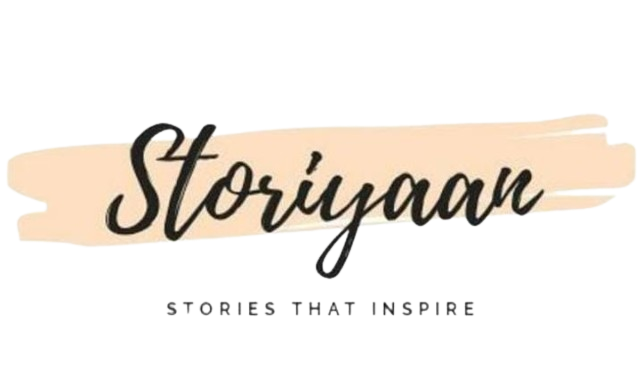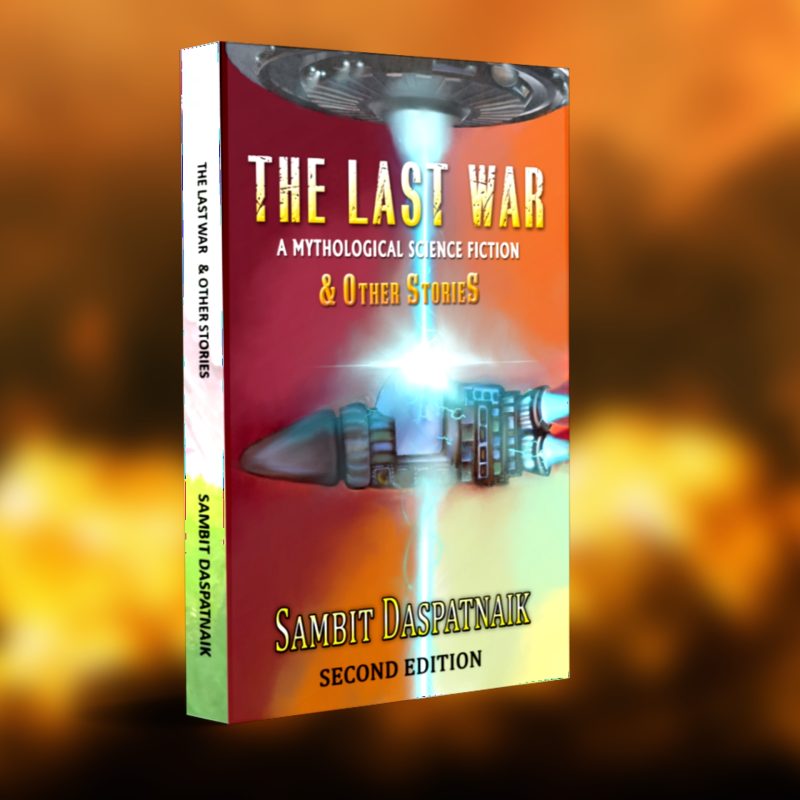A flare for writing, backed by an ever-increasing love for science and mythology was the perfect chemistry for Sambit Daspatnaik’s master-craftsmanship in producing one mind-blowing story one after the other. The author of “The Last War and Other Stories” which is a collection of science fiction stories, Sambit has been a curious and voracious reader since his childhood and has always found respite in the stories and myths of the writer’s world. He has several awards and accolades to his name including the “Sahityakosh Sammam Award” by ne8x_official, “Opus Talent Award for Best Writer in the year” and “Writer’s Ink Award 2021”. Despite his hectic schedule, Sambit has retained his love for photography, art, writing, and reading to this date. Know more about the effervescent Sambit in his bookish conversation with Storiyaan.

Interview
Questions and answers
What triggered your fascination for sci-fi and how did it germinate over time?
As a kid, I wrote suspense and thriller stories as I was interested in the unconventional and quirky elements. My interest in sci-fi stories started after a visit to a book exhibition and then I fell in love with the genre. Since then I honed my writing abilities and started writing mythological science fiction, futuristic space stories, and interplanetary travels exploring the human element and emotions.
You have adopted a unique style of blending sci-fi with mythology. When did you first discover the connection and decided to amalgamate the past with the future?
My grandmother, Bishnupriya would narrate tales from The Ramayana and The Mahabharata, those magical tales fascinated me as a child and I would try to connect these stories with scientific reasoning. I imagined that the Gods used ‘vimanas’ (flying machines) and were filled with queries about the scientific answers to the ‘mantras’ (spells) used during wars. This made me connect mythology with science as they both are my areas of interest.
What was it about the simplicity of Ramayana that won you over more than the extravagance of Mahabharata and how did you find them relatable?
The Ramayana and The Mahabharata, both enthrall me for their historical significance and story. Purushottama Lord Rama was a living example of Dharma and righteousness and the epic is a lesson for all of us to be inspired by him. Mahabharata too is equally interesting with complex plots, subplots, and narrative but the simplicity and the moral of Ramayana have always touched my heart. The settings, historical period, and rich education in these epics draw my attention every time.
Your book is claimed to be “many flavors in a single book”. How does each “flavor” satiate diverse readers?
Science fiction has many sub-genres. So, I decided to compile space travels, mythological storytelling, historical fiction, futuristic time travel, spirituality, and human-alien interaction in different stories like “Genesis”, “The Holy Temple of Eula”, “The Last War” etc. The sci-fi readers were glad to see an element of all these in a single book and appreciated this approach a lot.
Out of all the characters in the book, who did you most relate to yourself and why?
An author loves each character that he develops in his story. However, I could relate with the character Anna who has her eyes transplanted with alien eyes, and she hates to live with those eyes as they have changed her vision – This character touches me the most as in this world despite medical advances, human civilization is still grappling to find a cure to several illnesses.
In ‘The Holy Temple of Eula’, the researchers are hit by a pandemic and the crew’s existence was threatened by a mutating alien virus. Were you struck by the situational irony as the human race goes through a pandemic itself or was the irony inspired and intentional?
I wrote “The Holy Temple of Eula” somewhere around 2015. So, my mention of a pandemic due to a mutating virus is a coincidence in the story. However, our world has faced many pandemics in the past centuries, so it was something I could draw parallels from.
Your stories offer the readers the opportunity to explore the depths of their imagination and indulge in the what-ifs of the endings. What has been your strategy to accomplish this so far?
I did not have any set strategies but I wished to explore the endless possibilities that the sci-fi genre offers to the writers. So, I created stories revolving around the ‘what ifs’ by combining Mythology, Science, Spirituality, and Technology. It was about exploring and pushing the limits of the genre.
Provide us with a peek into the world of your next book and what are some of the things that we can expect from it?
In my next book which is a novel, I plan to take my readers further back in time. In a world of mythology and fantasy where spirituality and technology are common across the civilizations and so are the evil forces. I attempt to look at it from a science-fiction perspective. The work is still in the draft stage.

